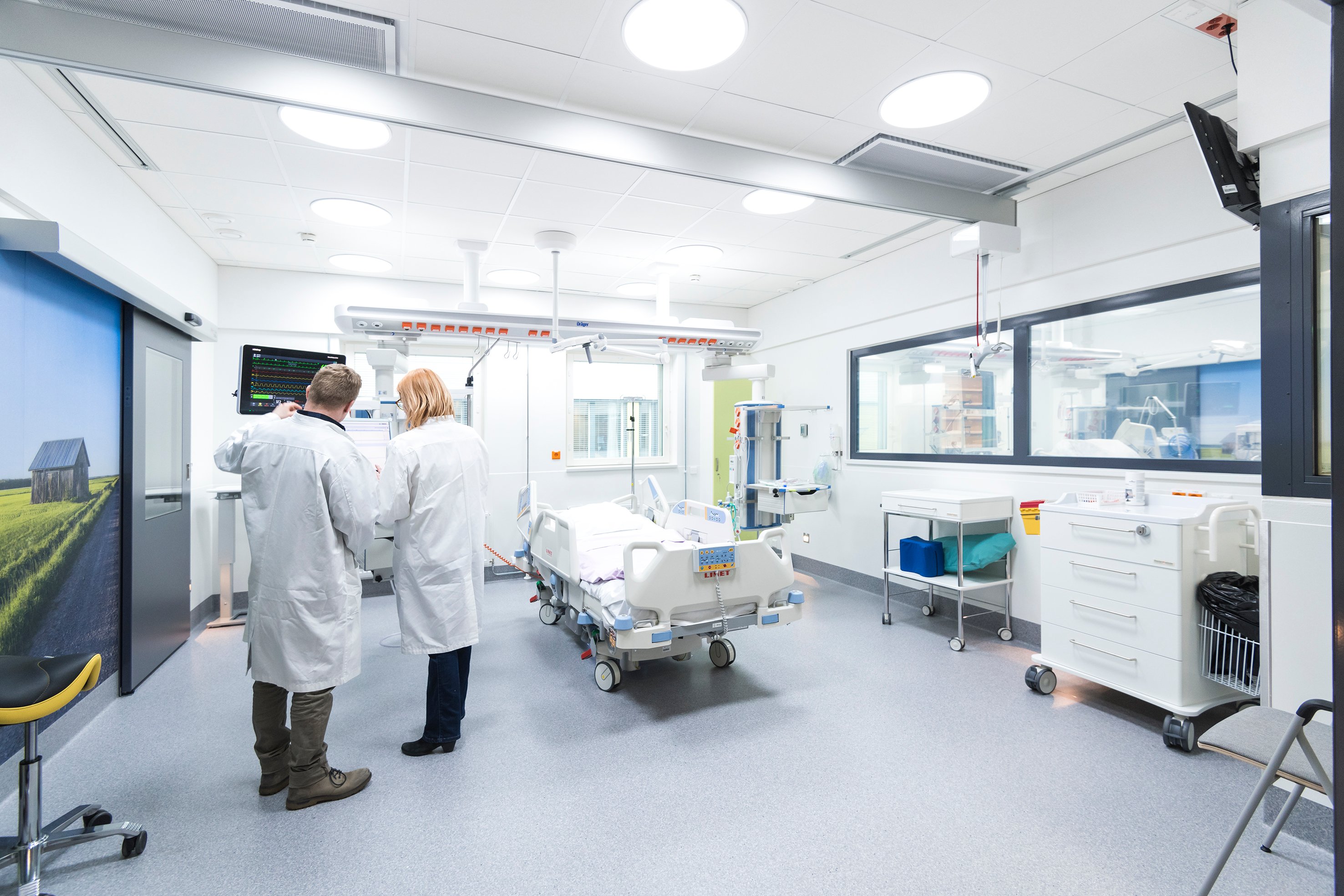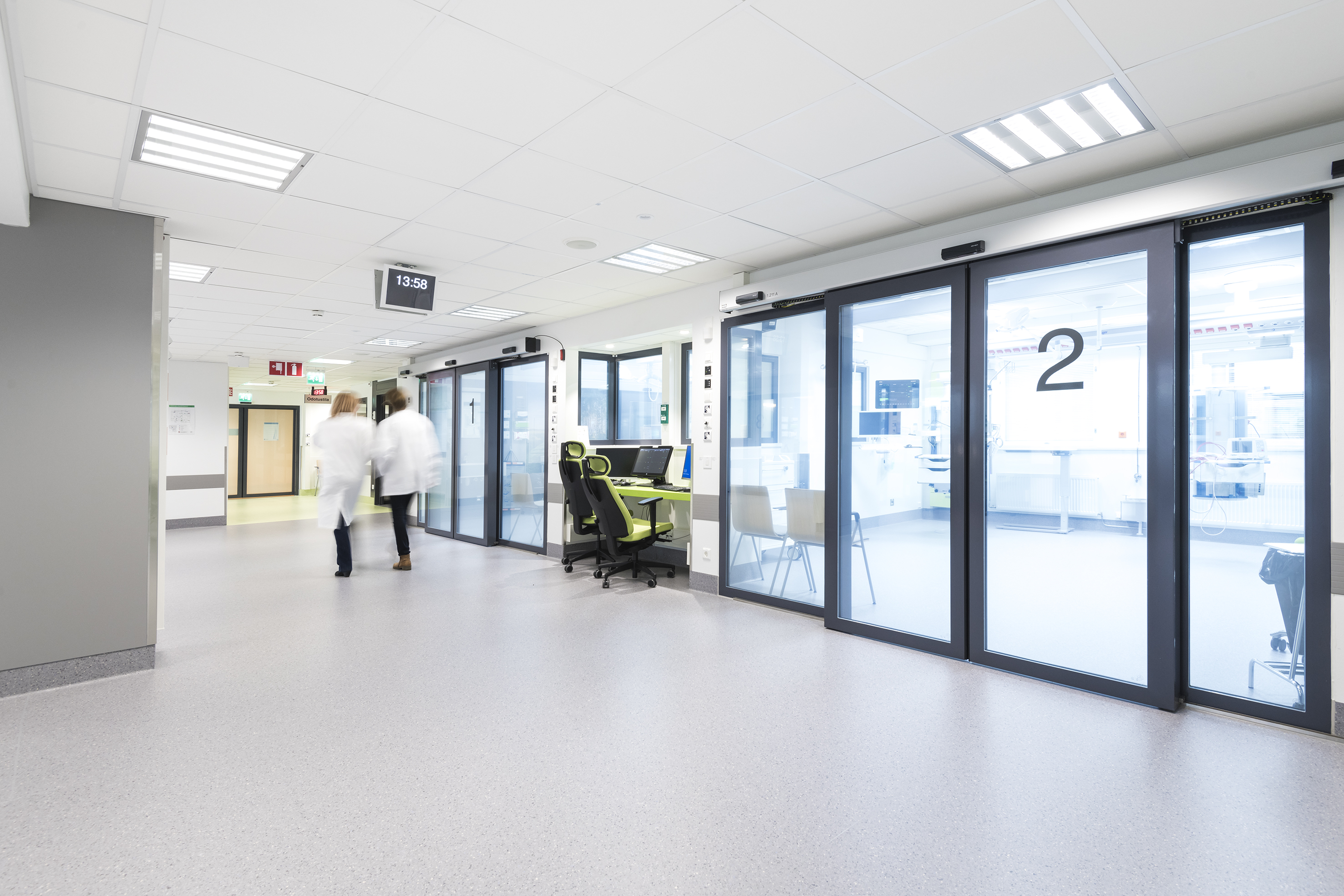
EVICURES sveikatos priežiūros projektas Suomijoje
In many older hospital buildings, noise is disruptive and continuous; for this reason, particular attention was paid to the acoustics in the new intensive and intermediate care unit in Seinäjoki, Finland.
The EVICURES project at this hospital was the first project to study evidence-based design (EDB) activities in Finland. Target of the project was to develop a new user friendly design model for intensive care units (ICU) and to design a new ICU according to this model.
A particular requirement of hospital facilities is that all surfaces, from floor to ceiling, are hygienic and cleanable, meaning that standard acoustic solutions cannot be used. In the Seinäjoki unit, the walls are decorated with nature-themed, printed acoustic panels. In addition to absorbing sound, these also make the corridors and treatment rooms more visually appealing.
Finlands first
Finland’s first intensive and intermediate care unit comprising single-patient rooms promotes cooperation between healthcare staff and patient recovery. Saint-Gobain Ecophon served as one of the cooperation partners for the groundbreaking EVICURES project (read more about the project and download the report here).
Seinäjoki Central Hospital’s new 24-bed unit was opened for use in early April 2018. Intensive and intermediate care operations from all of the hospital’s specialist areas are concentrated in the new unit, benefiting both patients and care staff.
|
Kati Hämäläinen, Nurse |
A further objective of the concentrated operations is to improve cost efficiency, the quality of care work, and the wellbeing and satisfaction of staff and patients alike. The construction of all of the facilities and the required equipment cost approximately EUR 12 million.
Basis for a joint development project
The basis of the design was the EVICURES project, which involved developing a design model for an intensive and intermediate care unit of the future. The design model is based on EBD, Evidence Based Design, utilising research information and user experiences provided by VTT Technical Research Centre of Finland.
Architecture firm Arkkitehtitoimisto Jääskeläinen Oy was responsible for the architectural and interior design elements of the project:
| Jyrki Jääskeläinen, Architect |
Users as part of the facility design process
 The design and construction of the intensive and intermediate care unit were based largely on information on practical usage. The staff have a great deal of knowledge and experience of how the facilities are used, whilst the designers and builders are the experts when it comes to the technical requirements of the facilities.
The design and construction of the intensive and intermediate care unit were based largely on information on practical usage. The staff have a great deal of knowledge and experience of how the facilities are used, whilst the designers and builders are the experts when it comes to the technical requirements of the facilities.
These two perspectives had to be combined as effectively as possible.
|
Tiina Yli-Karhu, Design Coordinatorof the Hospital District of South Ostrobothnia |
Those involved had the opportunity to familiarise themselves with and test out the functionalities, furniture mobility, lighting and temperatures of the intensive and intermediate care facilities in advance using VR glasses and 3D models in the Virtual Reality Technology Laboratory at Seinäjoki University of Applied Sciences.
|
Kati Hämäläinen, Nurse |
|
Jyrki Jääskeläinen, Architect |
To make the job of care staff easier, all of the rooms are equipped identically. This means that the care staff do not need to move equipment and devices from one room to another, as everything they need is always available right where they are.
Interior design facilitates efficient recovery
Research data about factors affecting patient recovery was also used in the design process.
Patient wellbeing is prioritised through means such as stress-minimising technical solutions: personal care rooms feature windows or are lit with dynamic light sources that imitate natural light, varying in accordance with the daily rhythm.
Jyrki Jääskeläinen states that in single-patient rooms, features such as heating, lighting and sound conditions can be adjusted to suit the patients’ preferences and needs. This allows the body to focus on getting better.
Healing design

With private rooms, patient privacy can be ensured when carrying out procedures, and rest and recovery are more efficient.
Furthermore, friends and family can come and visit patients without disturbing other patients in the facility. Separate rooms also reduce the risk of airborne infections spreading. Diseases cannot spread as easily as in shared rooms.
Glass walls were chosen to separate the rooms, to allow care staff to monitor patients’ condition and wellbeing continually, even from outside the room – and if necessary, the window surfaces between rooms can be turned opaque or dimmed at the press of a button to obstruct the view into neighbouring rooms or the corridor.
|
Kati Hämäläinen, Nurse |


